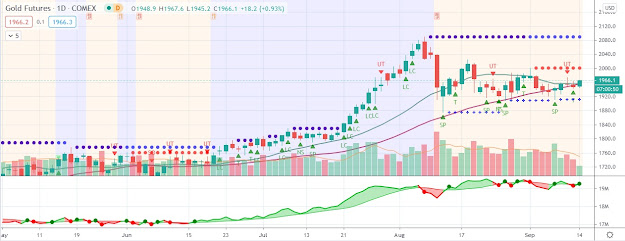Sovereign debt crisis in Europe is likely to continue to be a primary driver for gold prices
Gold prices oscillated between gains and losses while the U.S. dollar held firm Monday morning. The spot price of gold climbed to $1,600.30 per ounce in overnight trading, but slid back toward $1,590 as U.S. financial markets opened.
Since falling last Wednesday to $1,526.87 per ounce – its lowest level since December 29, 2011 – the gold price has now rebounded over 4.0%. Furthermore, on a year-to-date basis the price of gold returned to positive territory, by 1.7%, after its best two-day advance last Thursday and Friday since October of 2011. However, the yellow metal is coming off of three consecutive monthly declines for the first time since 2001, which has left many strategists cautious on gold going forward.
Analysts at UBS wrote in a recent note to clients that “To see a return of gold reacting positively to macro stresses is indeed refreshing, but it is still far too early to make any firm conclusions from here that gold has indeed turned the corner…Momentum will be key, and follow-through buying will have to kick in to encourage investors to jump in.”
In contrast to UBS, LGT Capital Management analyst Bayram Dincer was more constructive on the outlook for the gold price. “In this multi-crisis environment, we are seeing a change in attitude towards risk in gold, so we are very optimistic…We got to the point where the year-to-date performance was zero, and from a risk perspective people started to recognise that this was somewhere with lower risk compared to other asset classes.”
Looking to the week ahead, the ongoing sovereign debt crisis in Europe is likely to continue to be a primary driver for gold prices and broader financial markets. In the U.S., the economic calendar is relatively light this week, but does include a few key reports. Existing Homes Sales for April will be released on Tuesday morning, followed by New Home Sales for April on Wednesday. Thursday’s schedule includes Weekly Jobless Claims and the April Durable Goods data. The week then concludes with University of Michigan Consumer Sentiment on Friday, prior to the Memorial Day Weekend.
Since falling last Wednesday to $1,526.87 per ounce – its lowest level since December 29, 2011 – the gold price has now rebounded over 4.0%. Furthermore, on a year-to-date basis the price of gold returned to positive territory, by 1.7%, after its best two-day advance last Thursday and Friday since October of 2011. However, the yellow metal is coming off of three consecutive monthly declines for the first time since 2001, which has left many strategists cautious on gold going forward.
Analysts at UBS wrote in a recent note to clients that “To see a return of gold reacting positively to macro stresses is indeed refreshing, but it is still far too early to make any firm conclusions from here that gold has indeed turned the corner…Momentum will be key, and follow-through buying will have to kick in to encourage investors to jump in.”
In contrast to UBS, LGT Capital Management analyst Bayram Dincer was more constructive on the outlook for the gold price. “In this multi-crisis environment, we are seeing a change in attitude towards risk in gold, so we are very optimistic…We got to the point where the year-to-date performance was zero, and from a risk perspective people started to recognise that this was somewhere with lower risk compared to other asset classes.”
Looking to the week ahead, the ongoing sovereign debt crisis in Europe is likely to continue to be a primary driver for gold prices and broader financial markets. In the U.S., the economic calendar is relatively light this week, but does include a few key reports. Existing Homes Sales for April will be released on Tuesday morning, followed by New Home Sales for April on Wednesday. Thursday’s schedule includes Weekly Jobless Claims and the April Durable Goods data. The week then concludes with University of Michigan Consumer Sentiment on Friday, prior to the Memorial Day Weekend.




Comments
Post a Comment